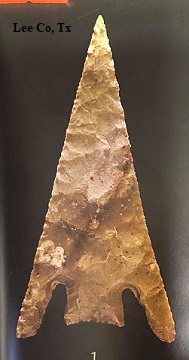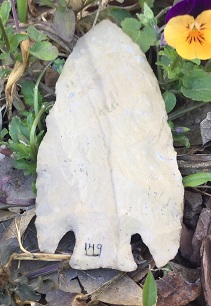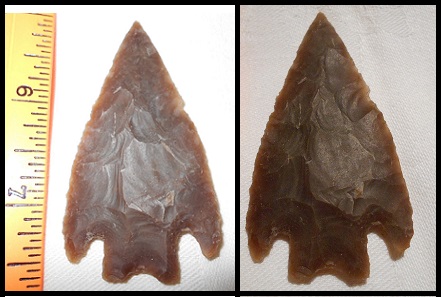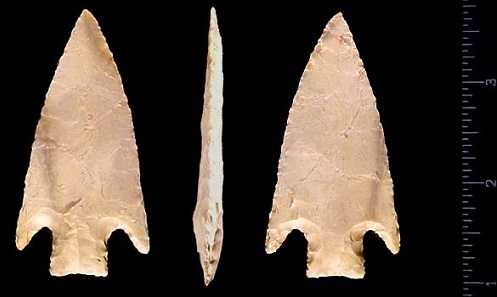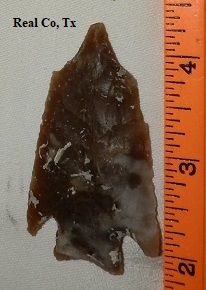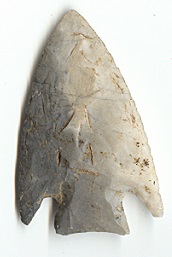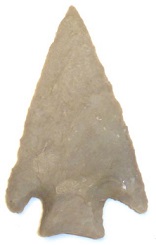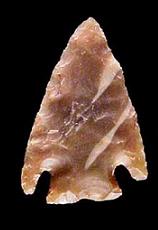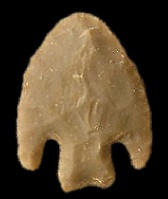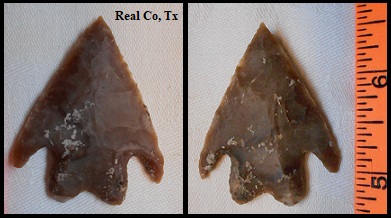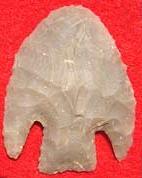Outline is Representative of Size and Shape:
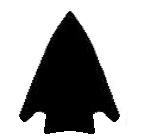
Name Details:
Identifd By: Dee Ann Suhm, Alex D. Krieger, Edward D. Jelks
Named For: Marshall Ford reservoir near Marshal Ford, Travis County, Texas
Date Identified: 1954
Type Site:
Identifd By: Dee Ann Suhm, Alex D. Krieger, Edward D. Jelks
Named For: Marshall Ford reservoir near Marshal Ford, Travis County, Texas
Date Identified: 1954
Type Site:
Point Validity:
Valid type
Suhm was an eminent Texas anthropologist who, among many distinguished positions, served as Director of Texas Archeological Research Laboratory. Krieger was a renowned anthropologist who spent most of his career in Texas cataloging projectile points and pottery in Texas before moving on to the University of Washington. Jelks was a distinguished anthropologist and helped organize the newly formed Department of Anthropology at Illinois State University where he was a Professor. His work in Texas furthered the understanding of Texas archeology and was a founding force for the Society of Historical Archeology. This type was named in a professional publication and subsequent book and has many professional references. This is a valid type.
Suhm was an eminent Texas anthropologist who, among many distinguished positions, served as Director of Texas Archeological Research Laboratory. Krieger was a renowned anthropologist who spent most of his career in Texas cataloging projectile points and pottery in Texas before moving on to the University of Washington. Jelks was a distinguished anthropologist and helped organize the newly formed Department of Anthropology at Illinois State University where he was a Professor. His work in Texas furthered the understanding of Texas archeology and was a founding force for the Society of Historical Archeology. This type was named in a professional publication and subsequent book and has many professional references. This is a valid type.
Marshall Barbed
Marshall Barbed
AKA: Smithwick Small Stem (Kelley, 1947),
Bluffton Barbed (Kelley, 1947)
Cluster:
Description of Physical Characteristics and Flaking Pattern:
This is a medium to large (typically 2.5 to 3 inches) triangular to a broad oval shaped basal notch point with a flattened cross section. The blade may vary from triangular to ovoid with a blade that may vary from excurvate to straight. Re-sharpened examples may have a slight recurvate shape. The shoulders are strongly barbed commonly extend to the base of the point. Commonly, one barb is longer than the other, or one may be squared while the other is rounded. Examples with smaller barbs may have a corner notched appearance instead of the basal notch appearance. The stem is most commonly straight, but may vary to slightly expanding. The base may vary from concave to slightly concave. This point usually has a high quality of workmanship and has a random flaking pattern.
Size Measurements:
Length - 50 to 115 mm, Stem Length - 12 to 25 mm (typically 1/8 to 1/4 the total length). Width across barbs - 30 to 50 mm, Stem Width - 12 to 25 mm (Suhm and Krieger, 1954).
Length - 50 to 115 mm, Stem Length - 12 to 25 mm (typically 1/8 to 1/4 the total length). Width across barbs - 30 to 50 mm, Stem Width - 12 to 25 mm (Suhm and Krieger, 1954).
Commonly Utilized Material:
Additional Comments:
The Marshall point is similar to the Castroville, Marcos, and Williams points. The Marcos point has a notch that enters from the base at a greater angle than the Castroville or Marshall point. The Marshall point is generally narrower and has a distinctly narrower stem than the Castroville. The Williams point has barbs that do not extend to the base. Re-sharpened examples may take on the characteristics of a Williams point. There are many overlapping characteristics with the Lange point.
This point is commonly found with Pedernales points. Worn out points may be difficult to distinguish from worn out Castroville points (Bell, 1958).
These points were originally called the Marshall Barbed point. This point has also been referred to as the Smithwick Small Stem and Bluffton Barbed points (Bell, 1958).
The Marshall point is similar to the Castroville, Marcos, and Williams points. The Marcos point has a notch that enters from the base at a greater angle than the Castroville or Marshall point. The Marshall point is generally narrower and has a distinctly narrower stem than the Castroville. The Williams point has barbs that do not extend to the base. Re-sharpened examples may take on the characteristics of a Williams point. There are many overlapping characteristics with the Lange point.
This point is commonly found with Pedernales points. Worn out points may be difficult to distinguish from worn out Castroville points (Bell, 1958).
These points were originally called the Marshall Barbed point. This point has also been referred to as the Smithwick Small Stem and Bluffton Barbed points (Bell, 1958).
Distribution: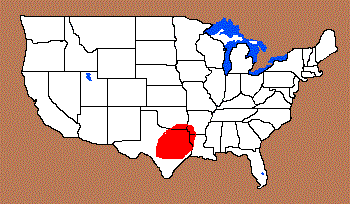
Distribution Comments:
This point is most commonly associated with central Texas, but may be be found into north-eastern Texas, western Louisiana, southwestern Arkansas, and southern Oklahoma.
This point is most commonly associated with central Texas, but may be be found into north-eastern Texas, western Louisiana, southwestern Arkansas, and southern Oklahoma.
Age / Periods:
Date: 4,000 - 2,000 B.P.
Cultural Period:Middle to Transitional Archaic
Glacial Period: Middle Holocene to Roman Warm
Culture:
Date: 4,000 - 2,000 B.P.
Cultural Period:Middle to Transitional Archaic
Glacial Period: Middle Holocene to Roman Warm
Culture:
Age Details:


